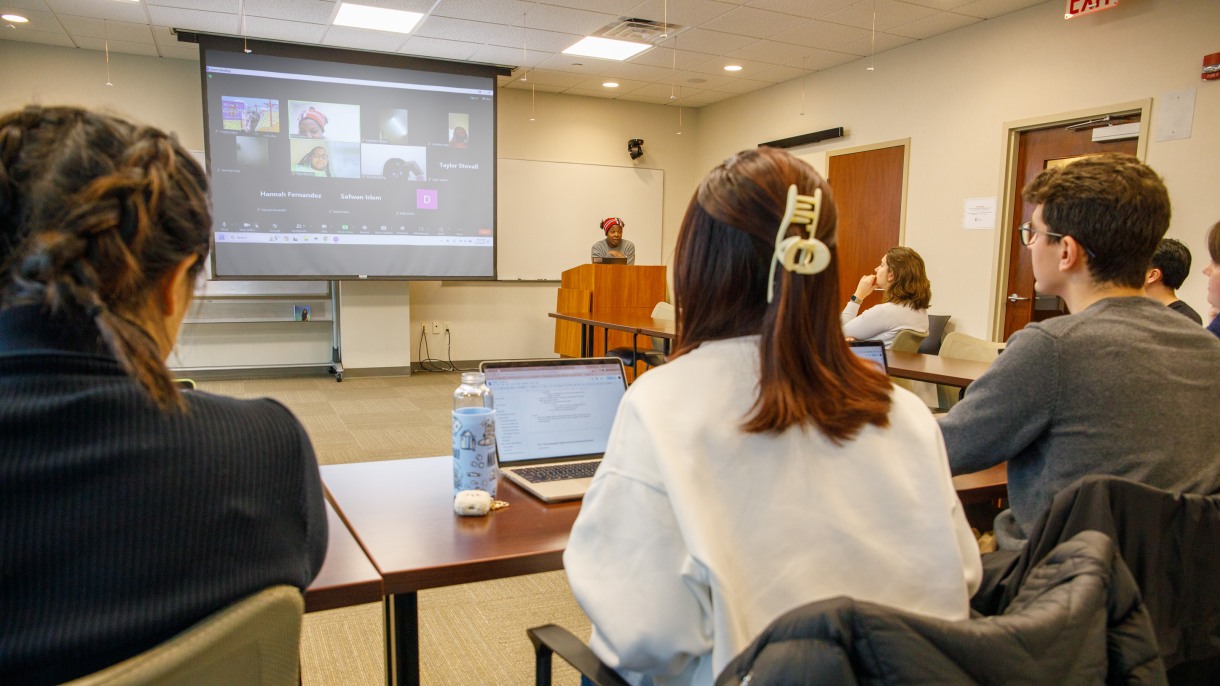Students from Brown University and Tougaloo College investigate public health challenges in rural areas
Students from Brown University and Tougaloo College investigate public health challenges in rural areas Brown University


The Role of Student Researchers in Advancing Sustainable Development Goals

Introduction
In collaboration with Brown University, student researchers from Tougaloo College are actively contributing to the advancement of the Sustainable Development Goals (SDGs). These students bring diverse perspectives, experiences, and training to the collaboration, enhancing the quality and impact of their work.
Research Focus and Contributions
Devon Newman, a junior in Brown’s five-year undergraduate/master of public health program, is interning at the Brown-Lifespan Center for Digital Health. Newman’s group is investigating volatile organic compounds (VOCs), which are air pollutants that can affect human health. They have utilized longitudinal data provided by Erica Walker, a professor at Brown, to make statistical associations with meteorological conditions. For example, they have examined whether the day of the week influences the amount of VOCs in the atmosphere.
Newman is overseeing the statistical analyses for his group and has expanded his knowledge of the statistical programming language R. He goes beyond the requirements of assignments by organizing data and conducting additional analyses, recognizing the importance of this information for the success of the project. Newman hopes that their work will inspire Dr. Walker to explore different associations and consider new perspectives.
One of the primary goals of Newman’s group is to extract insights from the data that can be shared with the community. They aim to educate individuals on measures they can take to protect themselves from the effects of wood pellet plants, as well as inform policy and advocacy efforts focused on regulating the industry.
Student Experiences and Learning
Ta’Lynda Boyd, a Tougaloo senior majoring in biology, is also part of the VOC-measuring group. Boyd has enjoyed participating in field visits to collect data and has appreciated witnessing how individual roles contribute to the group’s success. As her first public health course, Rural Public Health has provided Boyd with valuable exposure to working with data and presenting analyses. She found it particularly insightful to observe how students from another university, with different academic cultures and geographical areas, approached the same assignment.
La’Kedric Fultz, a Tougaloo senior majoring in biology, is involved in a separate project from the Gloster study. Fultz’s group collected noise measurements in downtown Jackson. While Fultz has previous public health research experience through his participation in the Jackson Heart Study Scholars Program, this was his first time working with research-grade sound level meters. He expressed gratitude for the hands-on experience this opportunity provided.
Collaboration and Overcoming Challenges
Despite being in different time zones, Walker made an effort to include the Tougaloo students in the class at Brown through virtual platforms. This allowed for meaningful interactions and knowledge exchange between the students at both institutions.
Conclusion
The collaboration between student researchers from Brown University and Tougaloo College exemplifies the power of interdisciplinary partnerships in advancing the Sustainable Development Goals. Through their contributions to various research projects, these students are not only gaining valuable experience but also making a tangible impact on individuals, communities, and policy efforts. Their work serves as a testament to the importance of fostering collaboration and knowledge sharing to address pressing global challenges.
SDGs, Targets, and Indicators Analysis
1. Which SDGs are addressed or connected to the issues highlighted in the article?
- SDG 3: Good Health and Well-being
- SDG 11: Sustainable Cities and Communities
The article discusses the collaboration between student researchers and their work on air pollutants and noise measurements, which are directly related to public health and the well-being of individuals. It also mentions the goal of informing policy and advocacy efforts, which aligns with the sustainable development of cities and communities.
2. What specific targets under those SDGs can be identified based on the article’s content?
- SDG 3.9: By 2030, substantially reduce the number of deaths and illnesses from hazardous chemicals and air, water, and soil pollution and contamination.
- SDG 11.6: By 2030, reduce the adverse per capita environmental impact of cities, including by paying special attention to air quality and municipal and other waste management.
The article highlights the research on volatile organic compounds (VOCs), which are hazardous air pollutants affecting human health. This aligns with SDG 3.9, which aims to reduce deaths and illnesses from air pollution. Additionally, the collection of noise measurements in downtown Jackson relates to SDG 11.6, which focuses on reducing the adverse environmental impact of cities, including air quality.
3. Are there any indicators mentioned or implied in the article that can be used to measure progress towards the identified targets?
- Number of deaths and illnesses related to hazardous chemicals and air pollution
- Air quality measurements, specifically volatile organic compounds (VOCs)
- Noise levels in urban areas
The article mentions the research on volatile organic compounds (VOCs) and noise measurements, which can serve as indicators to measure progress towards the identified targets. Monitoring the number of deaths and illnesses related to hazardous chemicals and air pollution is also an important indicator to track progress towards SDG 3.9.
SDGs, Targets, and Indicators Table
| SDGs | Targets | Indicators |
|---|---|---|
| SDG 3: Good Health and Well-being | SDG 3.9: By 2030, substantially reduce the number of deaths and illnesses from hazardous chemicals and air, water, and soil pollution and contamination. | – Number of deaths and illnesses related to hazardous chemicals and air pollution – Air quality measurements, specifically volatile organic compounds (VOCs) |
| SDG 11: Sustainable Cities and Communities | SDG 11.6: By 2030, reduce the adverse per capita environmental impact of cities, including by paying special attention to air quality and municipal and other waste management. | – Air quality measurements, specifically volatile organic compounds (VOCs) – Noise levels in urban areas |
Behold! This splendid article springs forth from the wellspring of knowledge, shaped by a wondrous proprietary AI technology that delved into a vast ocean of data, illuminating the path towards the Sustainable Development Goals. Remember that all rights are reserved by SDG Investors LLC, empowering us to champion progress together.
Source: brown.edu

Join us, as fellow seekers of change, on a transformative journey at https://sdgtalks.ai/welcome, where you can become a member and actively contribute to shaping a brighter future.







